Recipes and tips to save you from your freeze-dried, vacuum-packed nightmare.
We live in a food-motivated world, as demonstrated by the most common question I get asked about my adventures: what do you eat on the trail? While I think most have day-hike lunches figured out, people seem to run short on ideas for multi-day trips. Time and time again, I watch as people make faces and choke down those disgusting freeze-dried, vacuum-sealed, meal-in-a-bag disasters. And at around 9 bucks a pop, they are an expensive way to ruin a much-anticipated meal. Look, I get that they meet many of the backpacking requirements (light, little cleanup, and calorie-dense), but they get an F for cost and flavor. I don’t know about you, but I prefer real food, and it’s really not much more effort to put together fast, tasty, calorie-dense, light, and cheap meals.
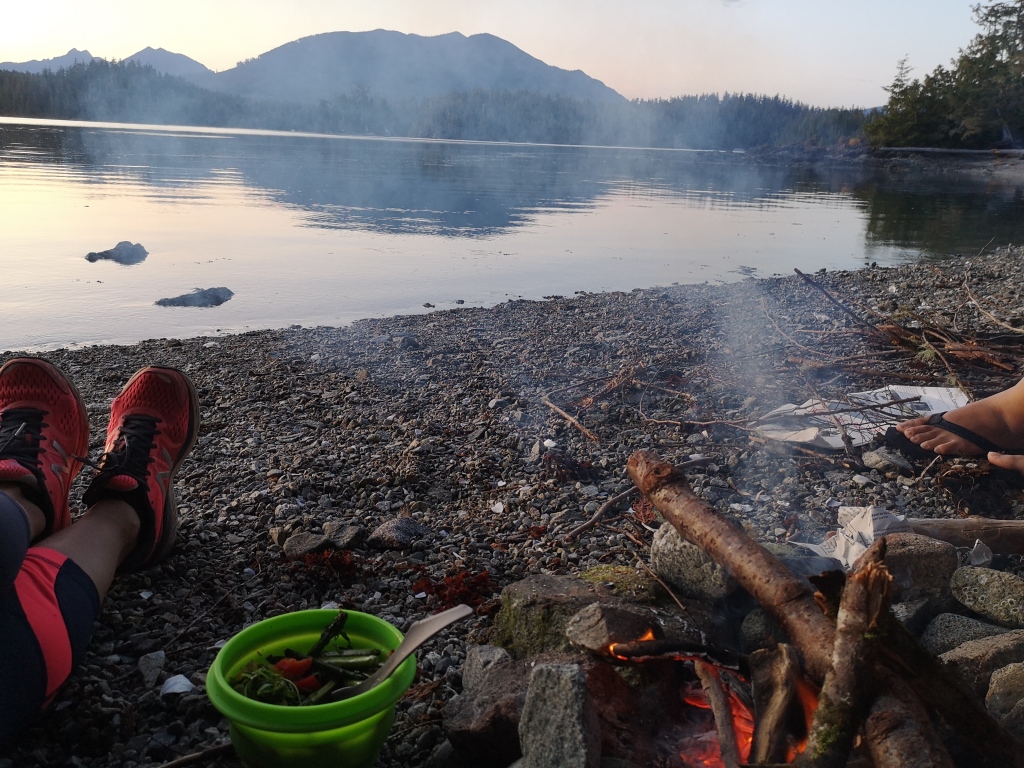
So let’s talk parameters. When deciding what food to bring on your trip, you’ll want to keep the following in mind:
- Calorie density: the ratio of calories to weight will make or break your back (for those of us peasants that can’t afford a porter to carry our supplies). Calorie dense foods pack more bang for your weight buck. Some examples of calorie dense foods include nuts, oil, seeds, peanut butter, chocolate, granola, and cheese.
- Nutrient density: while I’ve heard stories of people bringing little calorie bombs, like butter or muffins crushed into balls, these people are failing to give their bodies the nutrients they need to perform. Just like in your day-to-day life, you’ll need appropriate amounts of carbs, fat, and protein, as well as micro-nutrients. While junk food is calorie dense, you’re setting yourself up for a crash by ignoring these other nutrients.
- Cleanup: the last thing I want to do after a hard day of hiking and a warm, cozy meal is trudge to a lake or stream in the dim evening light and do dishes! Meals that limit dishes are a huge win.
- Packaging: you’ve seen the signs: pack it in, pack it out. Foods that limit the garbage you have to pack out make your life easier.
- Packability: Years ago, I brought Pop Tarts on a backpacking trip as an after-dinner treat. They ended up a crumbly, sticky mess in their little foil wrapper. Lesson learned. Bring foods that are sturdy enough to survive some rough handling!
- Ability to keep: one of the most limiting factors. Sans refrigeration, your food options can get pretty narrow. Fresh meat and dairy are particularly tough. As a rule, processed or dried meats will last the longest (jerky, salami, etc), as well as hard cheeses (Parmesan is a classic).
- Temperature sensitivity: I’ve had protein bars freeze solid in the winter, and chocolate melt into a gooey blob in the summer. Consider whether your food will survive the elements.
- Economical: another shot at pre-made meals – averaging $9 each, you might as well being eating at restaurants the entire trip! We can do better than that.
Keeping these basics in mind, read on for some ideas about what to eat on the trail, and never eat those fake, dried meals again! First, I’ve listed some snack and drink ideas; this is followed by some of my favourite breakfast, lunch, and dinner recipes.
Snacks: nuts, dried fruit (like apples, mango, and apricots), trail mix, rye crackers, hard cheese (Parmesan and Gouda both will last a week), pepperoni sticks, protein bars (Clif bars will survive a nuclear holocaust, or try the amazing low-sugar alternative: RX bars), fruit leather, jerky (check out low-sodium turkey jerky), salami slices, bagels, tortilla shells, peanut butter and jam (those little restaurant single-serve packs)
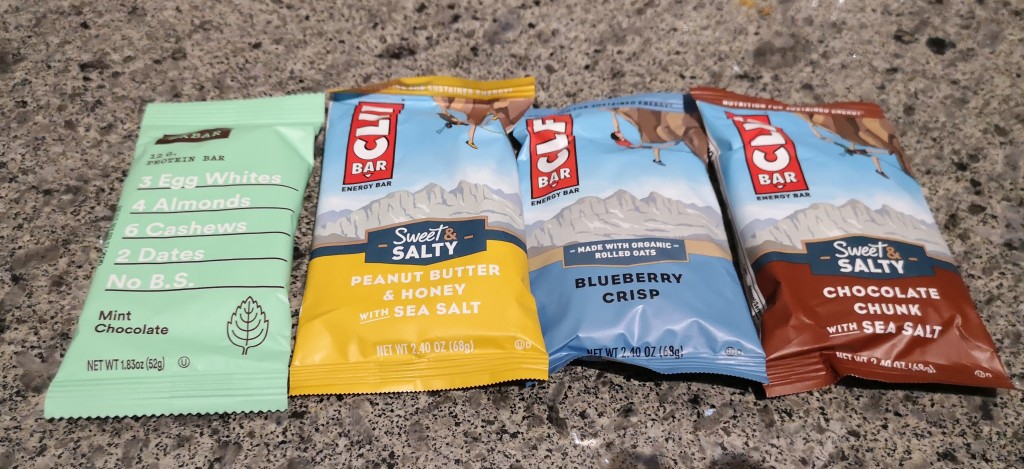
Precious American Clif Bar flavours 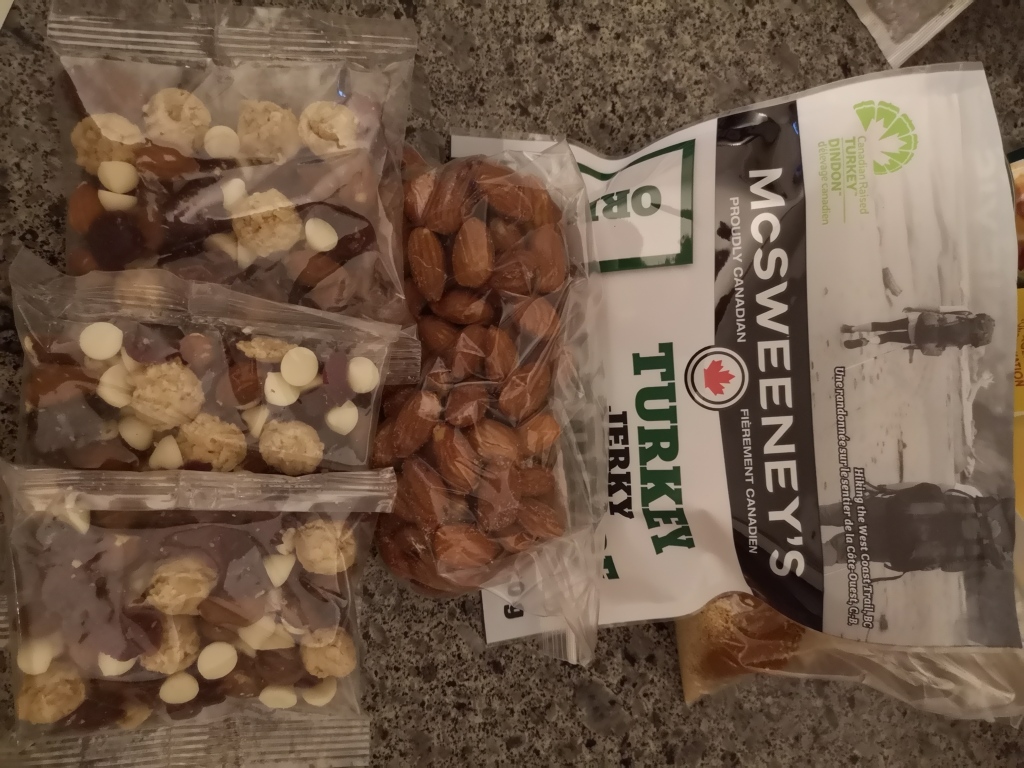
Some calorie dense snacks
Drinks: tea (both caffeinated and caffeine-free for evenings), instant coffee (Starbucks seems to be the winner), hot chocolate, powdered milk (to add to coffee/tea/cereal), electrolyte tablets, liquor (per above parameters, hard liquor is more efficient)
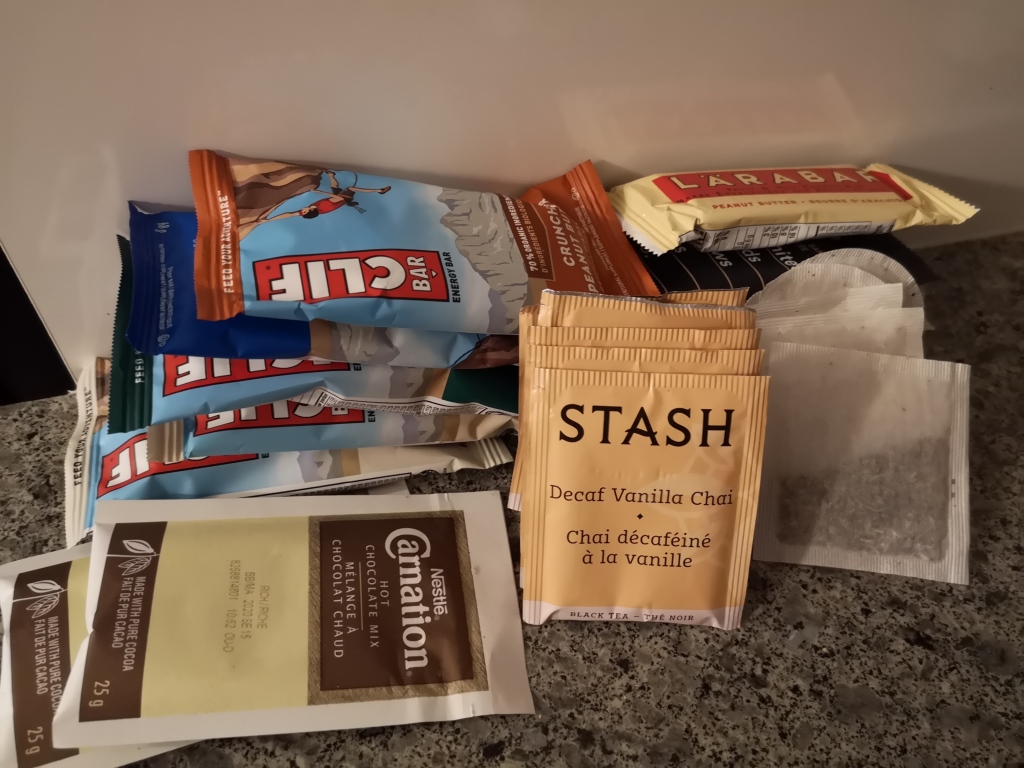
Hot drinks for the trail 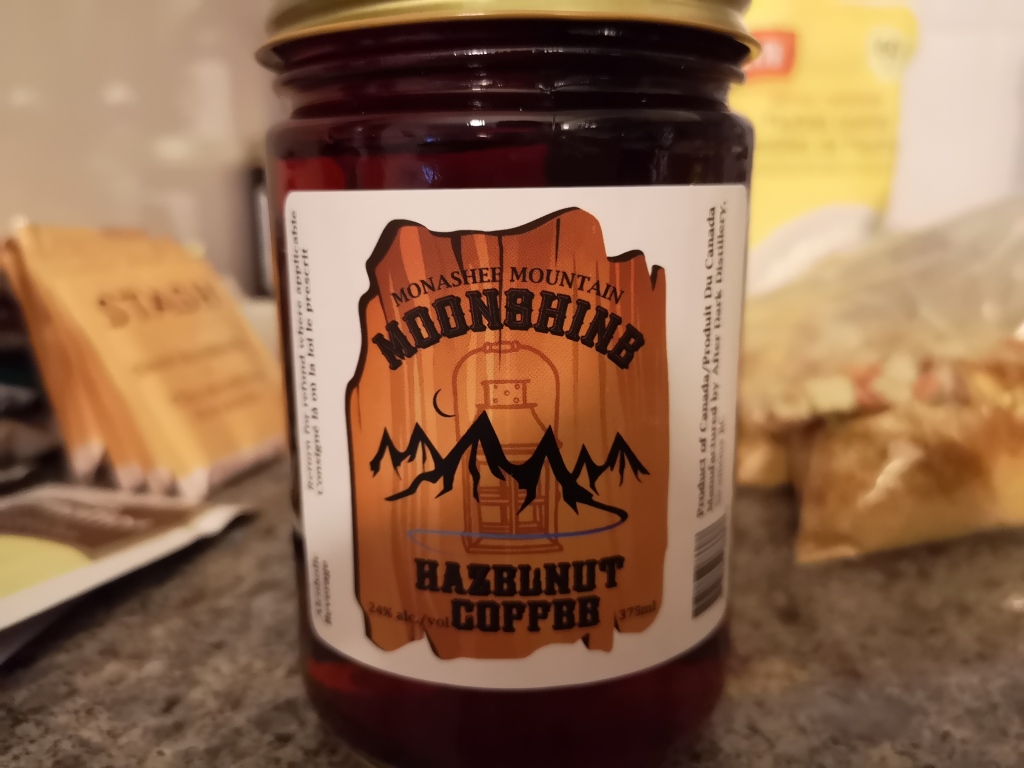
Hazelnut Coffee Moonshine – YOLO.
Recipes:
Homemade Instant Oats
Make your own nutritionally dense, low-sugar, instant oat packs. Dried fruit and cinnamon add sweetness, while nuts and powdered milk add tons of protein.
1/2 cup instant oats
2 tbsp powdered milk
3 tbsp mix-ins (such as nuts, seeds, or dried fruit – see combos below)
1/4 tsp cinnamon
Combine ingredients in a ziploc bag. To prepare, add boiling water until ingredients are just covered. Let sit for a few minutes, and you’re done!
Possible combos: blueberry almond, pineapple coconut, apple walnut, pecan raisin
Chia Cereal
A creamy chia cereal, with all the protein and fiber of oatmeal at less than half the packed volume.
4 tbsp chia seeds
2 tbsp powdered milk
3 tbsp mix-ins (see combos above)
Combine ingredients in ziploc bag. To prepare, add 8 tbsp of either hot or cold water, and let sit for 5 minutes.
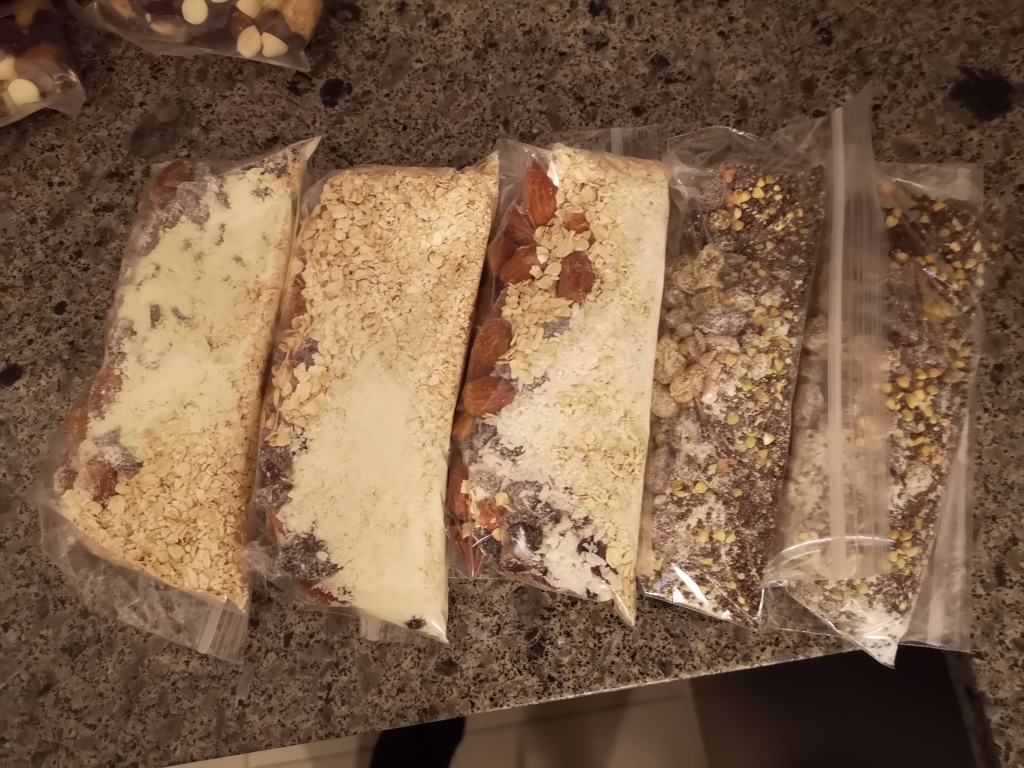
Oatmeal and chia cereal packs 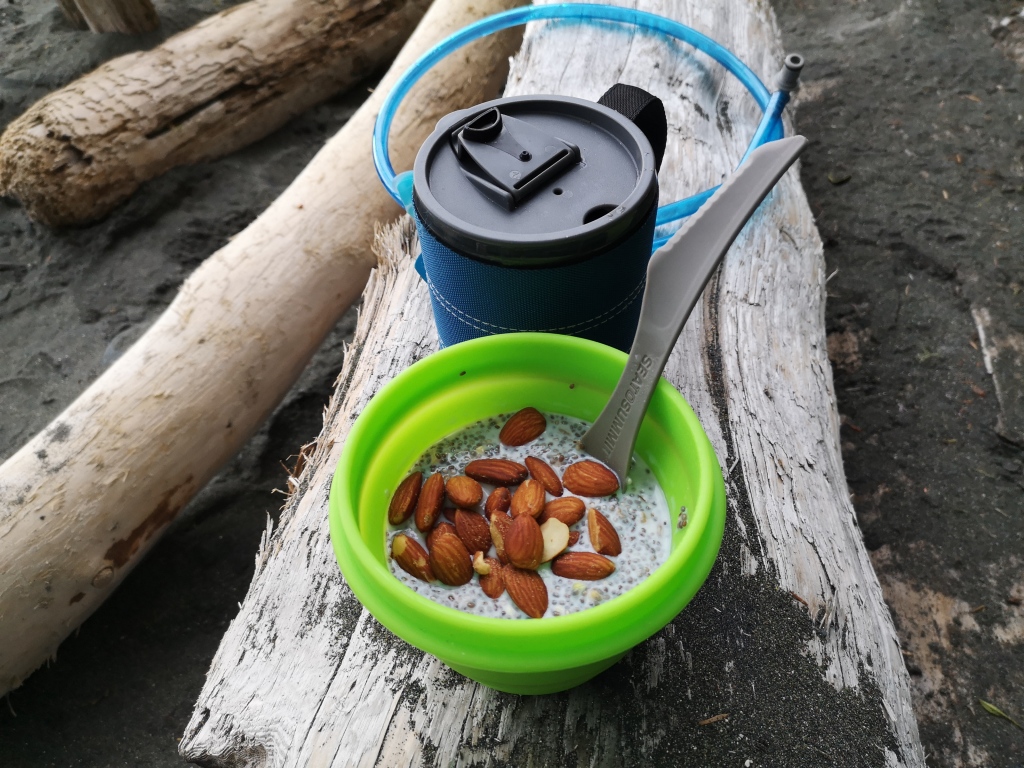
Almond chia cereal for breakfast
Peanut Butter Banana Bagel
A lunch that will keep for days on the trail with ingredients you probably already have in your kitchen. Lots of simple sugars for quick energy, plus some protein and fiber for staying power.
Whole wheat bagel
2 tbsp peanut butter
1 tbsp shredded coconut
1/2 tbsp sunflower seeds
1/2 banana, sliced
Toast bagel (this increases it’s ability to withstand squishing in your pack). Spread peanut butter on both sides. Top with coconut, seeds, and banana slices. Wrap, pack, and enjoy.
Curried Couscous with Tuna
Fast, healthy, little cleanup, and delicious, and for about the same space as a freeze-dried meal. Plus, nothing makes you feel warm and cozy like a spicy bowl of curry.
1/2 cup couscous (I get the whole wheat kind)
1/4 cup dried veggies (find these in the bulk section)
1 tbsp curry powder
1 tsp ginger
1 tsp turmeric
1 tsp sugar
pinch of salt
1 pouch or can of tuna (pouch is ideal if you can find it, as you don’t have to pack-out the can. If canned is your only option, make sure you get a can with a pull-tab.)
Combine all ingredients except tuna in a ziploc bag. To prepare, add 1/2 cup of boiling water (couscous ratio is roughly 1:1). Stir, and let sit for 5 minutes. Mix in tuna, and enjoy!
Variation: Mexican Couscous
Sub spices for 1 tbsp chili powder, 1 tsp cumin, and a pinch of salt. For veggies, go for dried corn. Sub pork jerky for tuna.
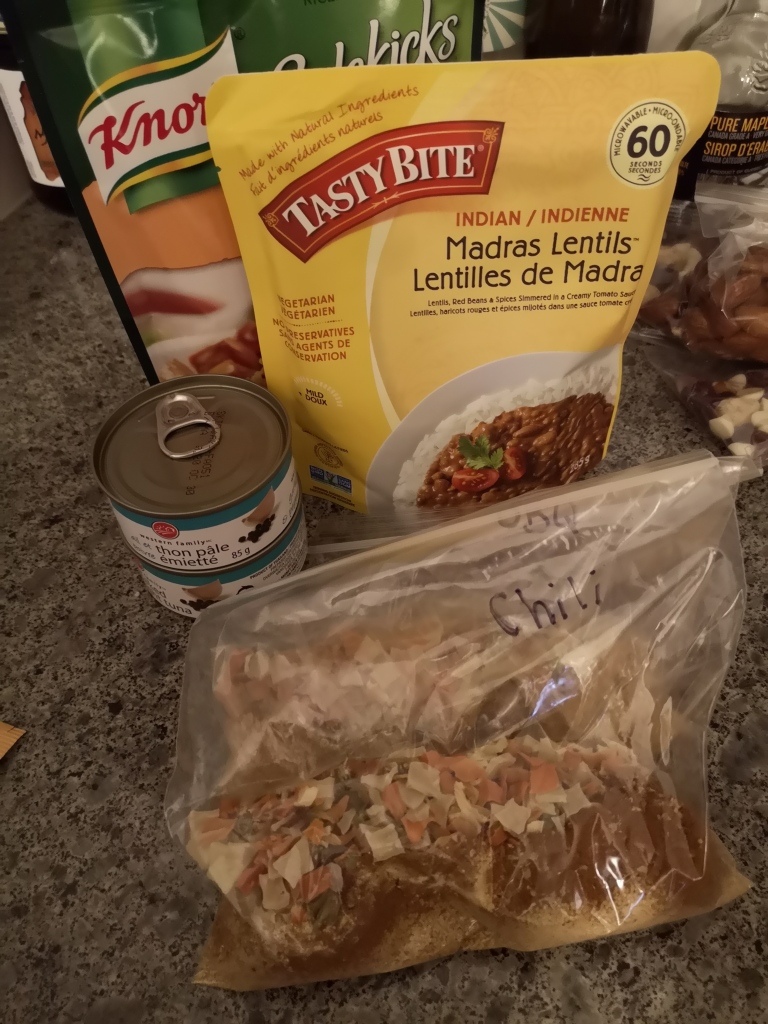
Homemade couscous packs, plus a few ‘instant’ meals for experimentation 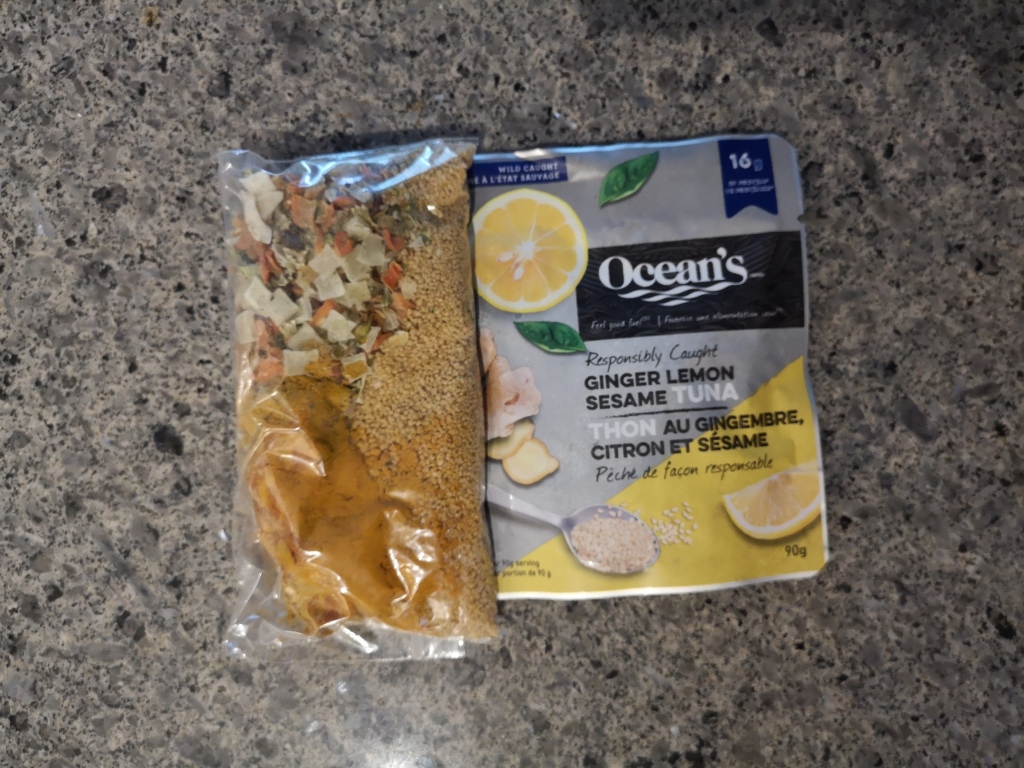
Curried couscous with tuna.
Food Pro-tips:
- Did you know that you can eat instant oatmeal right out of those single-serve, brown packets? They’re coated inside, so just pour the water right in! LIFE CHANGING.
- Repackage your food to save on space, weight, and trash. Pre-cut things like cheese and salami to save time and mess on the trail, pour liquor out of glass bottles and into your own plastic ones, and split things into single serving packs to not overeat.
- Shelf stable condiment packs from restaurants are perfect for the trails. I make a point of grabbing them whenever I’m out to eat. Think peanut butter, jam, mayo, ketchup, mustard, BBQ sauce, and soy sauce.
- If you treat your water with chlorine tablets instead of filtering, add flavoured electrolyte tablets to mask the chemical taste.
- For longer trips, portion your food into separate bags for each day. Rationing this way prevents you from eating more than a day’s share of food.
- Pack a little treat for the campsite at the end of the day; it’s something to look forward to after a hard trail! Consider hot chocolate, indulgent tea, a chocolate bar, marshmallows, whiskey – whatever floats your boat.
- Adding up the calories you pack for each day will help you avoid over- or under-packing. Use a calorie calculator to determine your basic needs. As a rule of thumb, you can add an extra 1000-2000 calories to this, depending on your body size and the difficulty of the trail.
- Bring more food than you think you’ll need, such as an extra lightweight meal. I’ve experienced an unplanned night out, and having an additional pack of oatmeal and a couple more Clif bars made all the difference.
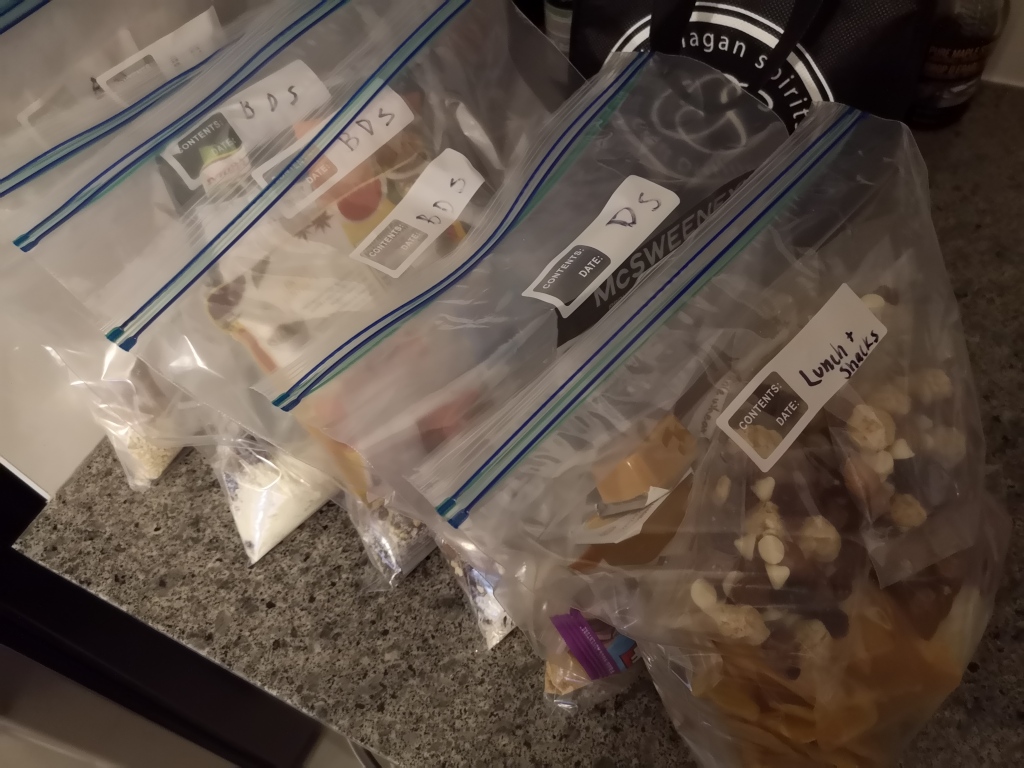
Each day’s food in a separate bag 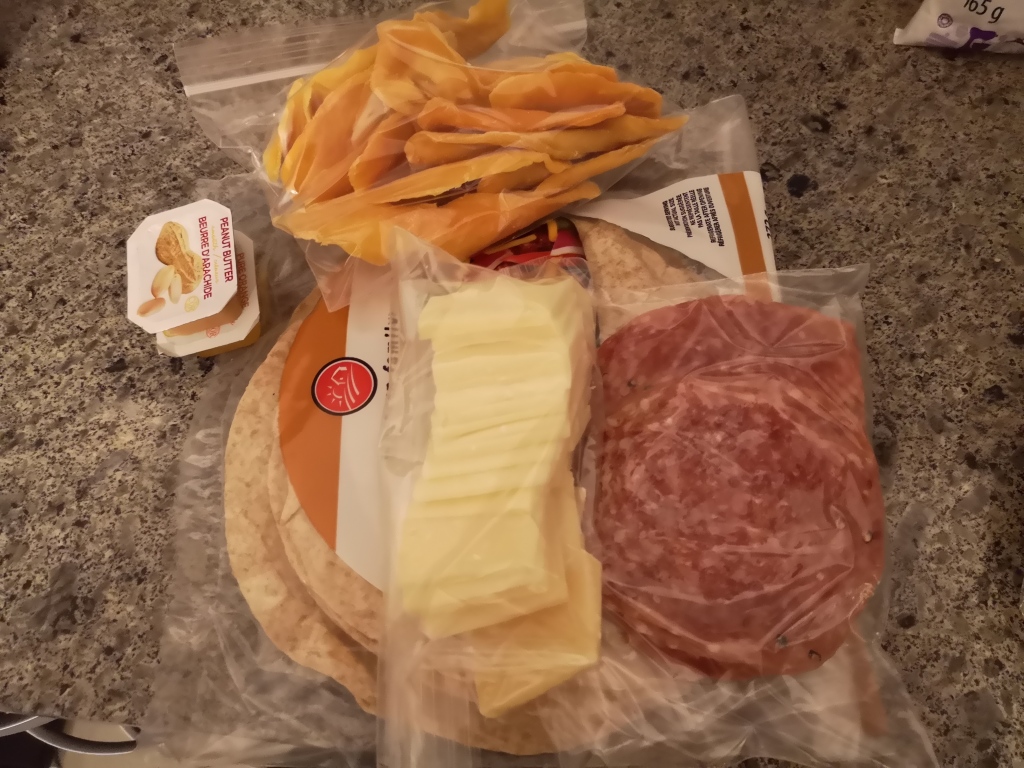
Pre-cut cheese and salami, plus tortillas, peanut butter packs, and dried mango
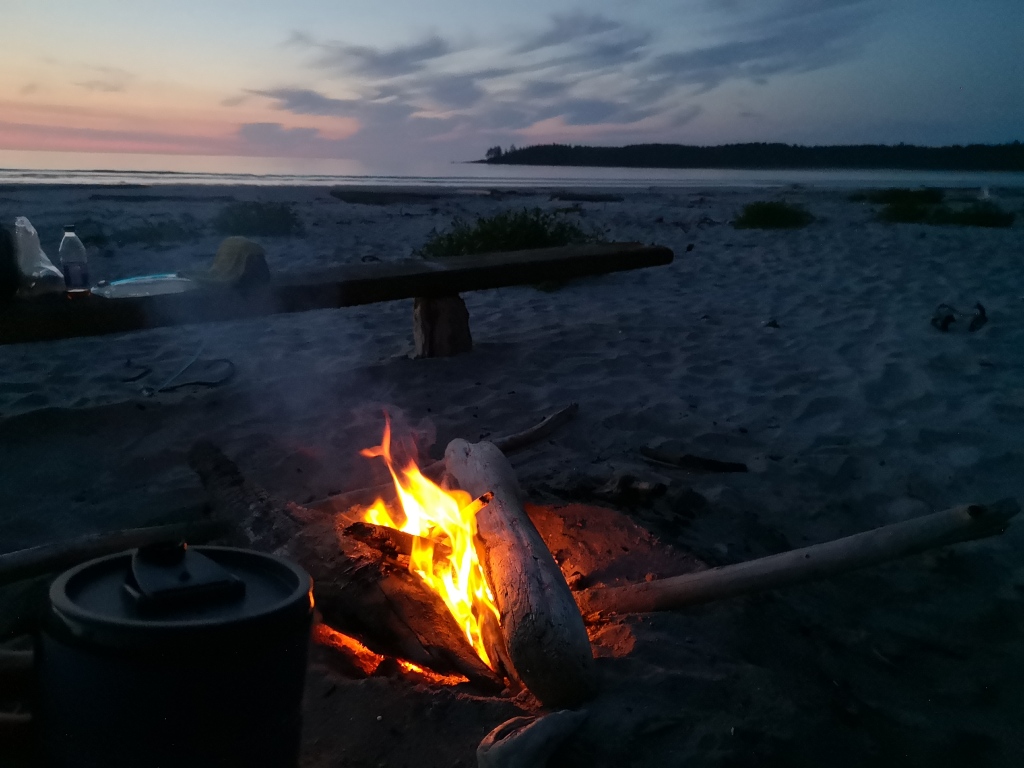
What are your favourite backpacking foods? Have any amazing recipes that you’d like to share? Let me know in the comments below!

Great tips and recipes. Thanks!
LikeLike